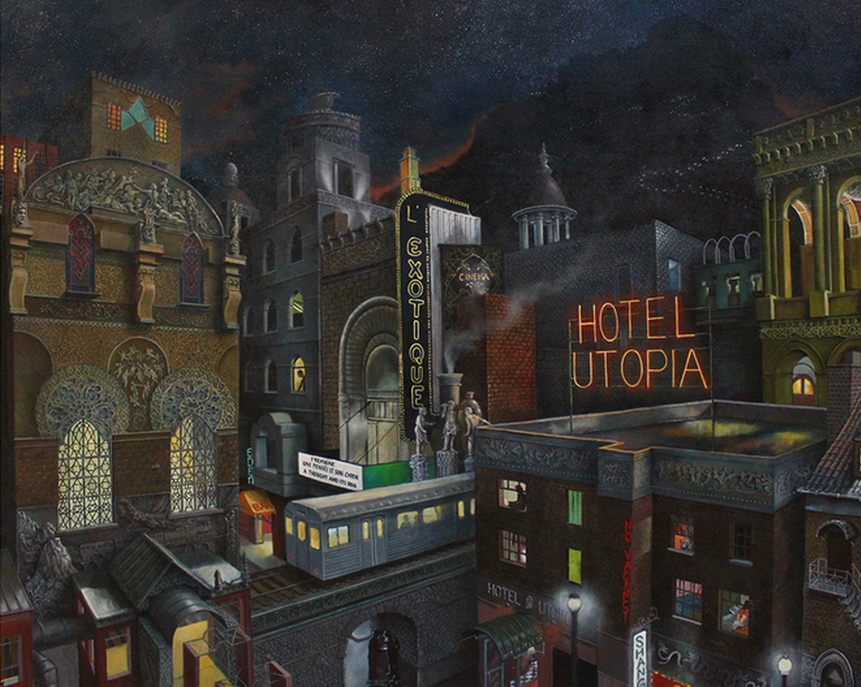As the popular belief goes, an Athenian pundit portrayed his guru designing a state in its paragon form in front of his mates almost two thousand and three hundred years ago, and since then, humankind has been on a very conscious endeavor to imagine further and to frame the absolute perfection.
After more than fifteen hundred circulations around the sun, on 1516, an English official created a fictional setting with a name deriving from the Greek topos meaning place or where, and ‘u’ from the prefix ou meaning no or not (Sargent, 2010) and was narrated in the speeches of Raphael Hythloday unfolding the perception of its inhabitants on war and peace, crime and justice, thieves and vagabonds, foods and metals, philosophy and politics; and then at the dawn of the twentieth century, on 1905, another Englishman with a terrific scientific imagination set himself to have a modern take on it, ‘not static but kinetic’ one, referencing meticulously to the preceding point of views. Throughout the years, this particular concept has been a content to envision and an intent of actualization of people across nations and cultures. Such a voyage of one single idea ageing multi-millennial deserves a diagnosis of its journey since it has sailed.
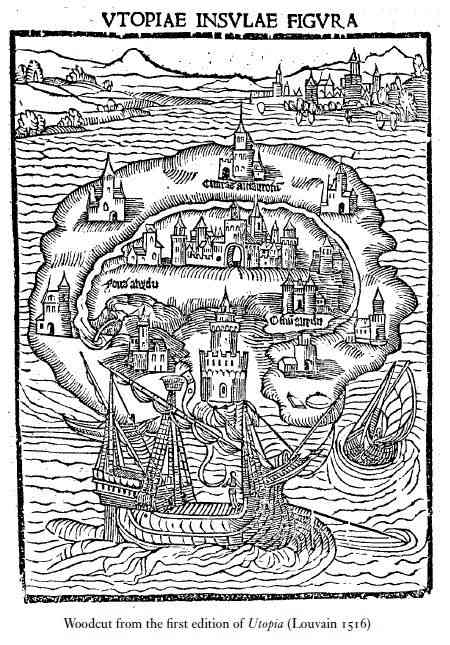
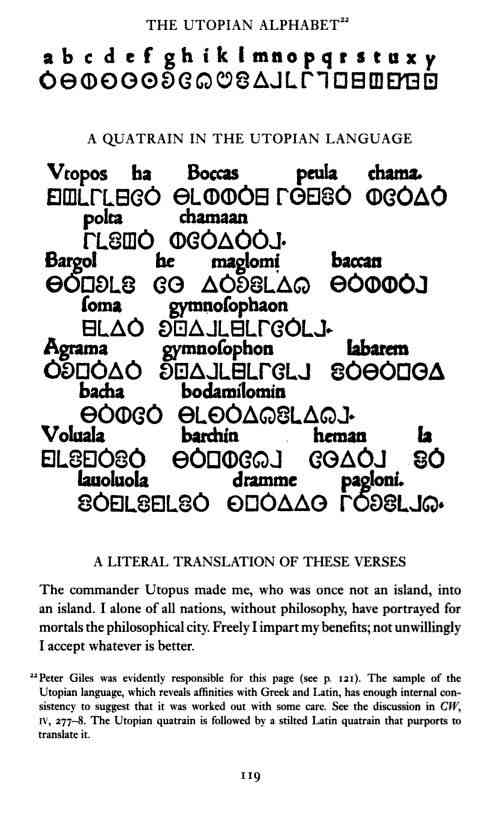
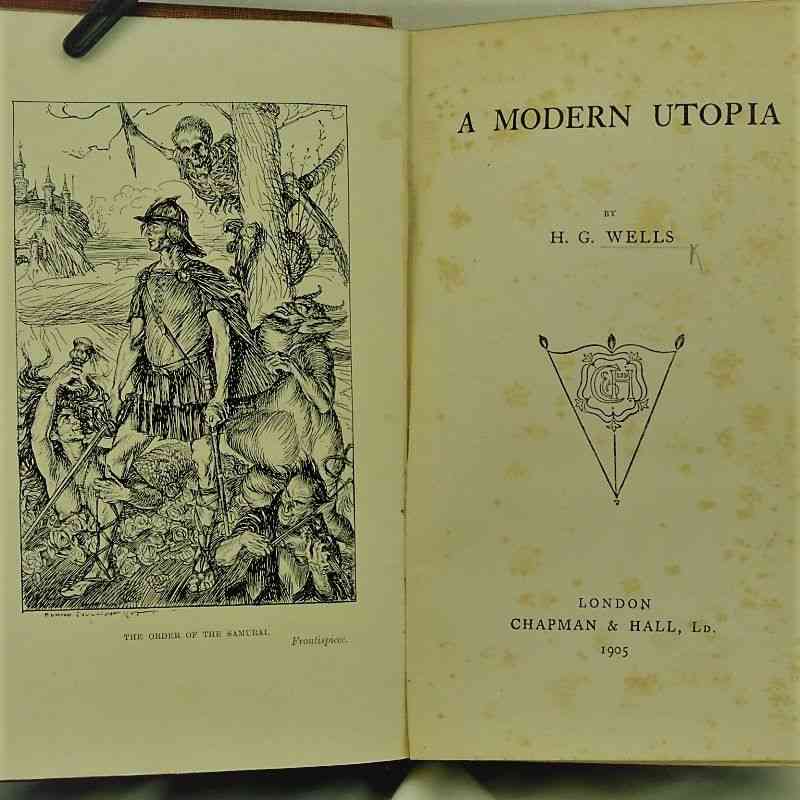
The available methods to analyze a concept in nursing science and business studies were reformed by Anita Nuopponen in a series of three papers published in between 2010-2011 to carry out in different faculties of academia. Among those, a model of analysis from an evolutionary perspective was developed by B. L. Rodgers (1993) that’s been dissected by Tofthagen and Fagerstrøm (2010) with a focus on the transformation of a concept over different periods in relation to the specific discipline the idea is being adopted and therefore having a contextual knowledge of its enculturation.
However, scholars looking through this particular topic have different opinions on the source of its initial proposition; L. T. Sargent (2010) referred to a Sumerian clay tablet dated back 2000 BCE having a mention of a Garden of the Gods (Kramer, 1963:145-147), whereas in the view of Morris and Kross (2009), it’s the Ecclesiazusae (Women in Parliament) by Aristophanes in or around 395 BCE providing the preliminary thought of such vision. Other than these, most of the learned ones like Claeys and Sargent (1999) noted a particular period as The Golden Age encompassing the works of Hesiod, Ovid and Vergil that depicted a sense of discontent with the existing situation with a projection of better condition, and then, with the extension of Judeo-Christianity through the works like City of God by Augustine in the early fifth century (Morris and Kross, 2009), the expectation of having an enhanced afterlife in exchange of the adversity in the time being on earth prevailed and followed in other systems of belief – and thus, the illustration of such a superior environment got to be contextualized not in the times of yore anymore, rather in the times to come in future.
In the post-More literature, both fictional and non-fictional ones, the focal point of such an idealized context has been concentrated on the feasible socio-economic and political factors that led toward the emergence of a variety of philosophical attitudes. Paul Ricoeur (1986) provided a series of lectures on the polarized nature of the ideology and the idea itself of such structure analyzing the works of Karl Marx, Louis Althusser, Karl Mannheim, Max Weber, Jürgen Habermas and Clifford Geertz evaluating the probability of a realistic function of their doctrines in social existence, that serves as an empty space from where, through the reflexive nature of human, people view at themselves.
In other cultural settings, the representation of similar themes has been observant. In the view of Sargent (2010), The Ruba’iyat of Omar Khayyam (1048–1131) is a proper account of a Persian dream that includes only ‘A Loaf of Bread, ‘A Flask of Wine’ and ‘A Book of Verse’ in creating a ‘Paradise’ (2009: 21), whereas Hara Prasad Shastri’s (1909) Valmikir Jaya (The Triumph of Valmiki) engulfs the idea of a heaven on earth for the Hindus and Rokeya Sakhawat Hossain’s (2015/1905) Sultana’s Dream depicts the desire of a space for women in the history of knowledge and power.
But it's The Republic by Plato that served as the point of discontinuity in the history of the conceptualization of ‘the ideal’ as opposed to ‘the actual’; in the fifth book, while chalking out the character of a philosophical ruler for a seamless society with an ultimate perception of justice, Socrates posed his thought in the following manner:
Is it possible for anything to be put into practice exactly as it is described? Or is it natural for practice to have less hold on truth than theory has? (p. 174)
Yet, people have attempted to manufacture such societal pattern intentionally, driven either by religious beliefs such as the formation of the Shakers in 1776 or by ideologies like the Fourierist colonies based on the views of Charles Fourier throughout the eighteenth and nineteenth centuries (Morris and Kross, 2009) and the same motivation triggered to the construction of Japanese communes like Ittō-En, or Garden of Light, in 1911 as well as Atarashiki Mura, or New Village, in 1918, and also stimulated Gandhi’s interpretation of Ramarajya, or the rule of the Divine for the Indian sub-continent (Sargent, 2010).
Furthermore, the evolution of mechanizing fantasy has brought out stories from pages and broadcasted on-screen, projecting someone's supernatural ability in 2003 that allowed him to anticipate the upcoming events and the creation of a community by the English in 2013-2014 as well as the Americans in 2020 on cyberspace based on the fascination of a graphic novel leading to consequences in physical space.
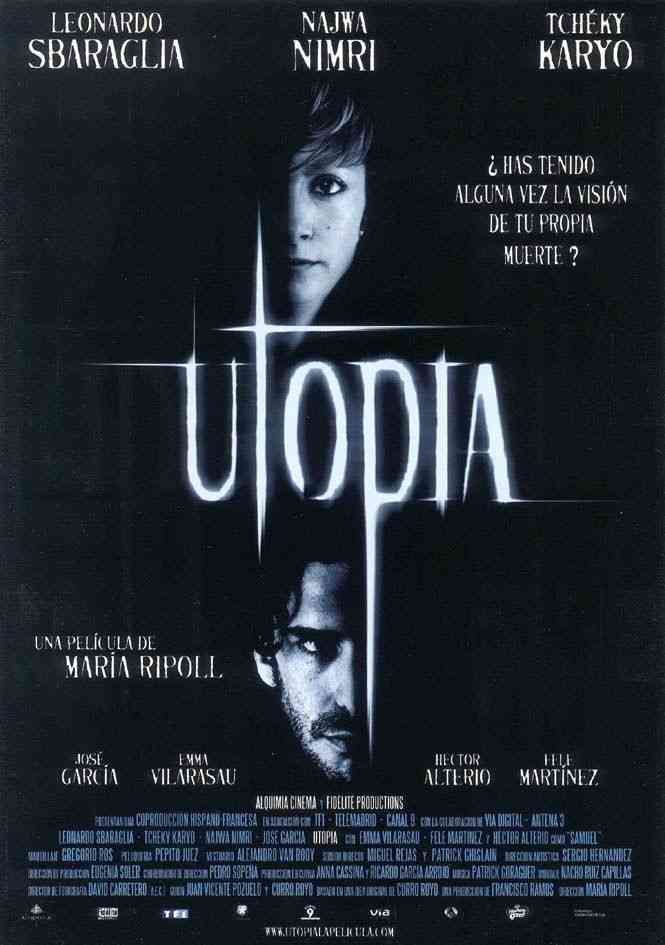
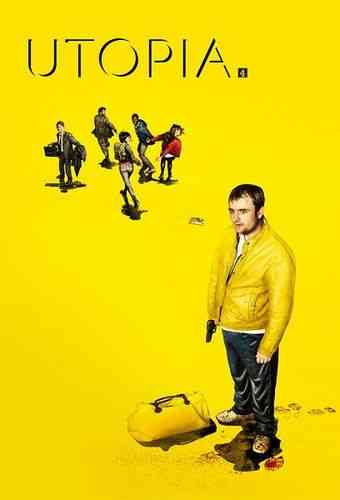
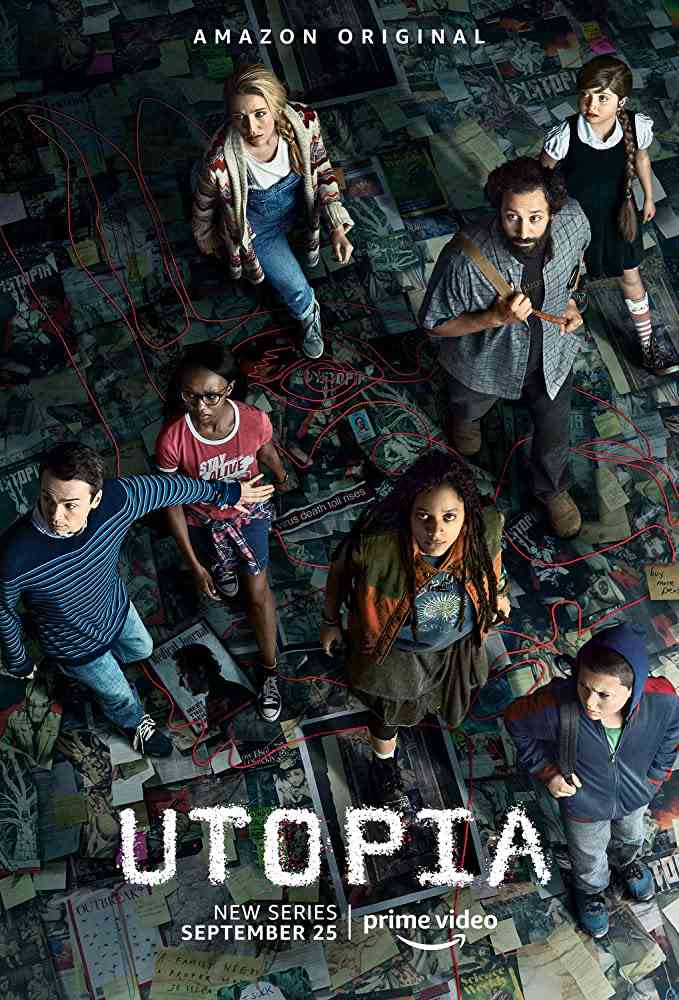
According to some researchers, cyberspace is the reincarnation of this concept in an actualized form. Patrice Flichy (2007) composed an in-depth analysis of the entire phenomenon in regards with Ricoeur’s (1986) ideas. Diane Rowland (1998) tried to break down the prevailing context at the dawn of the new millennia and the construction of cyber-communities which made the author concerned about the scarcity of a legal governing structure that led him stating as follows:
Society and community in Cyberspace can be viewed as forming and reforming amoeba like and therefore, at one level, can be likened to the Utopian State which comes from nowhere and goes nowhere.
Along with these theorizations through the lens of mental images, the utility and the practicality of its pristine commitment doesn't get to be passed without being questioned in contemporary opinions.
On the whole, throughout the gradual progression, this specific stream of thought has triggered intellectuals at the moment of resentment with an urge of thinking beyond the box. As a consequence, this concept is worthy of being analyzed from an auxiliary perspective as well.
In the series regarding the methods of diagnosing ideas, Nuopponen (2010a, 2010b) has mentioned about an interpretative model developed by Takala and Lämsä (2001) on deciphering a concept from the relevant texts.
In the view of Sargent (2010), the available materials produced on this conception can be broadly categorized in a literary genre, a set of social theories and itself as a method of analysis of other contexts; whereas, Morris and Kross (2009) analyzed it being tied thematically with religion, philosophy and movements across history. But, according to Claeys and Sargent (1999), this idea, as expressed in its reference works, is about corporeal satisfaction and the maneuver of the individual. However, for Mumford (1923), the visionaries of those alternative worlds were looking for an escape or compensation and afterwards a reconstruction, and in that process, sometimes, a substitute one is perceived exclusively for private use.
Being a concept in question throughout the history of humankind, a definitive structuration is knowledgeably unapproachable. But, a simple envisage offered by Sargent (2010) may be of help:
Utopia is a tragic vision of a life of hope, but one that is always realized and always fails. We can hope, fail, and hope again. We can live with repeated failure and still improve the societies we build (p. 132).
And thus, the journey proceeds further.
Post Image Courtesy: Howard Fox
References
Bruce, S. (1999). Three Early Modern Utopias. New York: Oxford University Press.
Claeys, G. & Sargent, L. T. (1999). The Utopia Reader. New York and London: New York University Press.
Flichy, P. & Carey-Libbrecht, L. (Trans.). (2007). The Internet Imaginaire. Binghamton: The MIT Press. (originally published in 2001).
Hossain, R. S. (2015). Sultana’s Dream. In Quadir, A. (Eds.). Rokeya Rachanabali (Complete Works of Begum Rokeya Sakhawat Hossain). Dhaka: Bangla Academy. (originally published in 1905).
Khayyam, O. & FitzGerald, E. (Trans.). (2009). The Rubáiyat of Omar Khayyam. New York: Oxford University Press.
Kramer, S. N. (1963). The Sumerians: Their History, Culture and Character. Chicago: The University of Chicago Press.
More, T. (2003). Utopia. In Logan, G. M. & Adams, R. M. (Eds.). Cambridge Texts in the History of Political Thought. Cambridge: Cambridge University Press. (originally published in 1516).
Morris, J. M. & Kross, A. L. (2009). The A to Z of Utopianism. Lanham: The Scarecrow Press.
Mumford, L. (1923). The Story of Utopias: Ideal Commonwealths and Social Myths. London: George G. Harrap & Co. Ltd.
Nuopponen, A. (2010a). Methods of Concept Analysis – A Comparative Study. Language for Special Purposes. 1(1). pp. 4-12.
Nuopponen, A. (2010b). Methods of Concept Analysis – Towards Systematic Concept Analysis. Language for Special Purposes. 1(2). pp. 5-14.
Nuopponen, A. (2011). Methods of Concept Analysis – Tools for Systematic Concept Analysis. Language for Special Purposes. 2(1). pp. 4-15.
Plato & Griffith, T. (Trans.). (2003). The Republic. In Ferrari, G. R. F. (Eds.). Cambridge Texts in the History of Political Thought. Cambridge: Cambridge University Press. (originally published in 360 BCE).
Ricoeur, P. (1986). Lectures on Ideology and Utopia. New York: Columbia University Press.
Rodgers, B. L. (1993). Concept Analysis: An Evolutionary View. In Rodgers, B. L. & Knafi, K. A. (Eds.). Concept Development in Nursing: Foundations, Techniques, and Applications. Philadelphia: Saunders.
Rowland, D. (1998). Cyberspace – A Contemporary Utopia? Journal of Information, Law and Technology. Retrieved from https://warwick.ac.uk/ fac/soc/law/elj/jilt/1998_3/rowland/ on September 20, 2020.
Sargent, L. T. (2010). Utopianism: A Very Short Introduction. New York: Oxford University Press.
Shastri, H. P. & Sen, R. R. (Trans.). (1909). The Triumph of Valmiki. Chittagong: M R Sen. (originally published in circa 1880).
Takala, T. & Lämsä, A.-M. (2001). Tulkitseva käsitetutkimus organisaatio- ja johtamistutkimuksen tutkimusmetodologisena vaihtoehtona (Interpretive conceptual research as a research methodological alternative to organizational and management research). Liiketaloudellinen aikakauskirja. 50(3). pp. 371–390.
Tofthagen, R. & Fagerstrøm, L. M. (2010). Rodger’s Evolutionary Concept Analysis – A Valid Method for Developing Knowledge in Nursing Science. Scandinavian Journal of Caring Sciences. 24. pp. 21-31.
Wells, H. G. (2009). A Modern Utopia. The Floating Press. (originally published in 1905).

